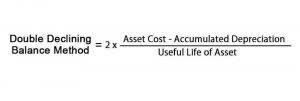
Once the customers pay the invoices, the factor releases the remaining balance to the business, minus a fee or discount rate. Although traditional business loan requirements may not be as important with invoice financing, it’s very likely that lenders will look at factors like your credit score, time in business, and annual revenue. In this case, as with all types of financing, the stronger your business’s qualifications, the more likely you are to access invoice financing with the most ideal rates and terms.
Is Invoice Financing Right For Your Business?
You still own the invoice and have to collect payment for it, but you’ll receive the money you need in the meantime. No matter the type of invoice fraud you might experience, the impact is equally significant. Individual smaller-sized companies may lose https://www.bookstime.com/ hundreds of thousands of dollars annually due to unauthorized transactions or payments for undelivered goods or services. But larger businesses with annual revenue in the billions could stand to lose millions or tens of millions of dollars a year.
Contactless Payments

This makes it easier for companies with bad credit or insufficient business history to qualify. Invoice financing allows you to access funds immediately based on the value of outstanding invoices, bypassing the typical wait for customer payments. This model not only improves liquidity but also means you invoice financing can reinvest in growth initiatives immediately, without having to wait for cash from accounts receivable to come in. Given the advantages of invoice financing, including improved cash flow, flexibility, and accessibility, it’s likely to remain a popular financing option for businesses in the future.
Sign in to view more content
- They act as intermediaries between businesses in need of immediate cash and investors or lenders willing to purchase invoices at a discount.
- Assuming the lender receives full payment for the invoices, it will then remit the remaining 15% to 30% of the invoice amounts to the business, and the business will pay interest and/or fees for the service.
- Once your customers pay their dues, you’ll receive the remaining 5% to 20% (minus a small transaction fee).
- Once you have a summary of your outstanding invoices, you’ll need to find a lender that issues A/R financing and submit a loan application.
- It usually wouldn’t have enough cash to do this until the 15th of the month when a couple of big party planner customers make regular purchases.
To do this, the business borrows a percentage of the value of its sales ledger from a finance company, effectively using the unpaid sales invoices as security for the borrowing. We offer customers capital for invoices, meaning they get access to funds to cover expenses, from Google Ads to inventory. For ecommerce businesses with seasonal sales patterns, invoice financing can help you manage inventory and operational costs ahead of peak seasons, ensuring you’re fully stocked and ready to meet customer demand. While it’s not specifically expense management software, you can use the platform for your spend management needs. Juni’s goal is to give everyone in digital commerce, from the CFO to the accounting team to marketing managers, everything they need to focus on business growth.

This way you won’t need to wait around for your customers to pay, potentially allowing you to invest and grow your company faster. Invoice financing is a type of alternative business loan not usually found with traditional banks and credit unions. Also called accounts receivable financing or invoice discounting, it uses your outstanding invoices to secure a loan from the lender. When businesses sell goods or services to large customers, such as wholesalers or retailers, they usually do so on credit. This means that the customer does not have to pay immediately for the goods that it purchases. The purchasing company is given an invoice that has the total amount due and the bill’s due date.
Focus on invoice financing for small business
There’s even a point-of-sale (POS) system for in-person transactions. With so many options, QuickBooks Payments is one of the most versatile systems out there. This can lead to more sales and a bigger customer base for businesses.
Lenders routinely charge around 1% per week, but actual costs vary wildly. You might have to pay processing fees, draw fees, maintenance fees, or bank wire fees. If you’re a business owner who uses invoices, waiting around for your B2B customers to dish out the dough can be a huge drag on your resources. And these days, companies are taking longer than ever to do just that.

